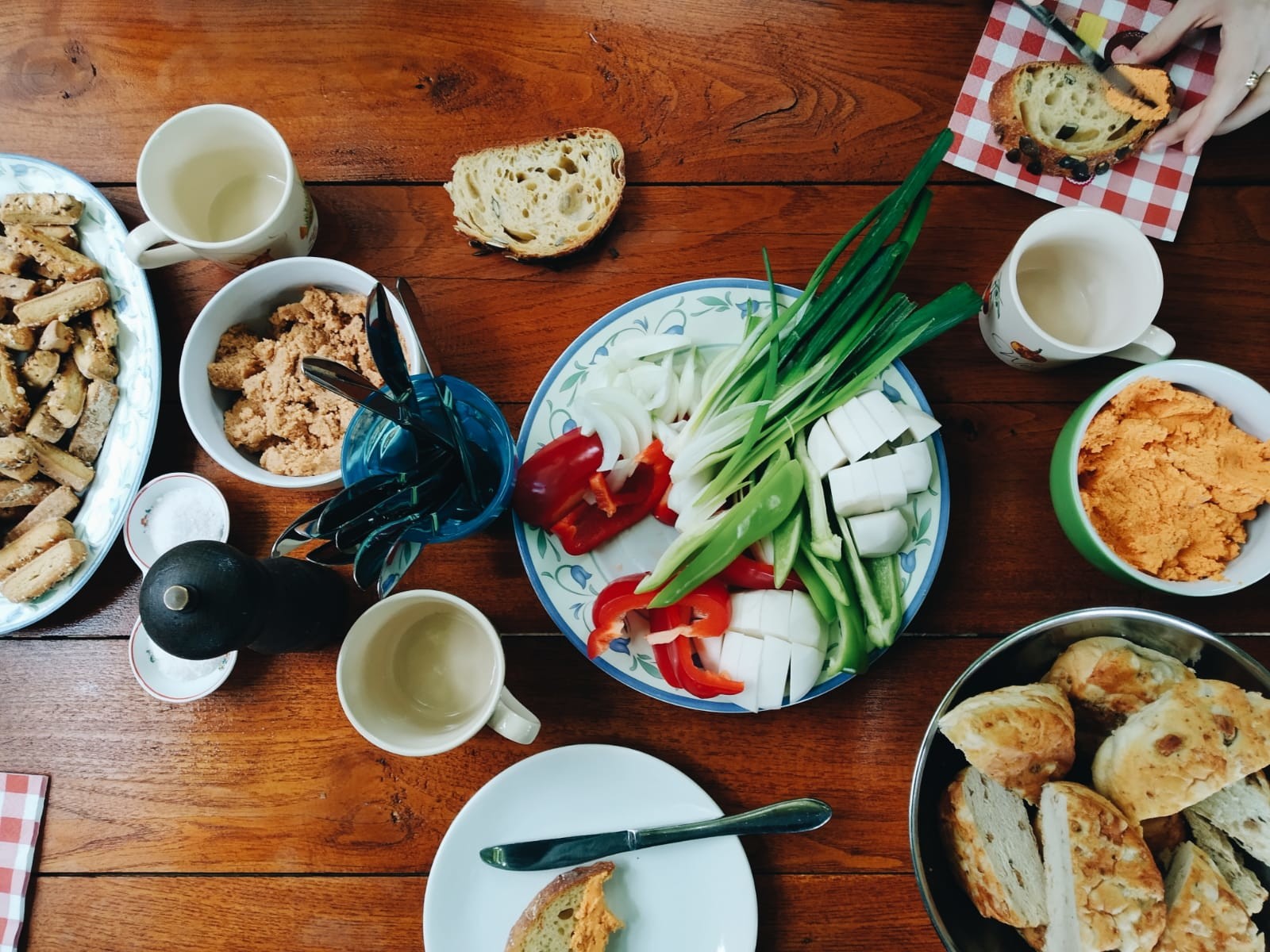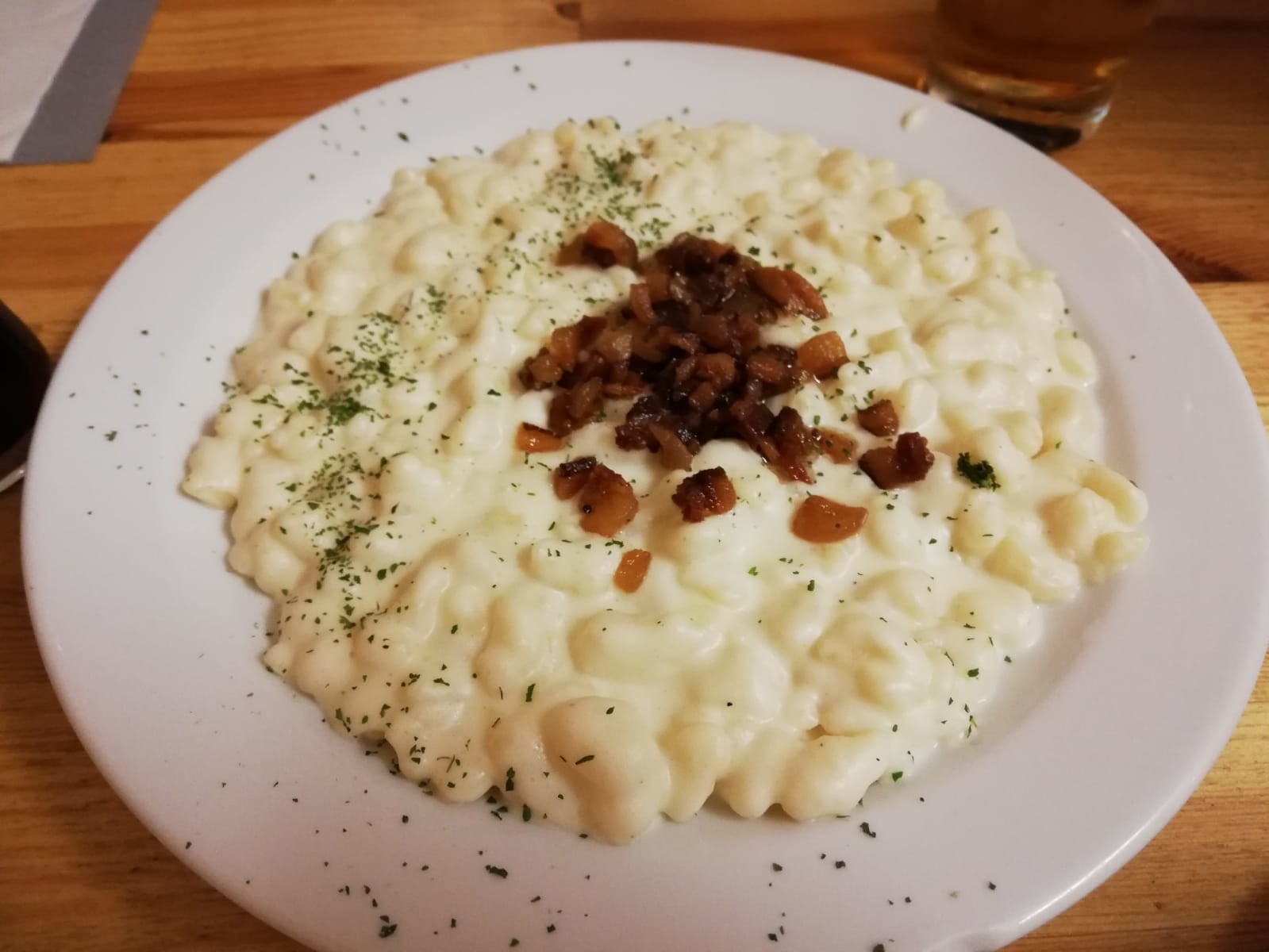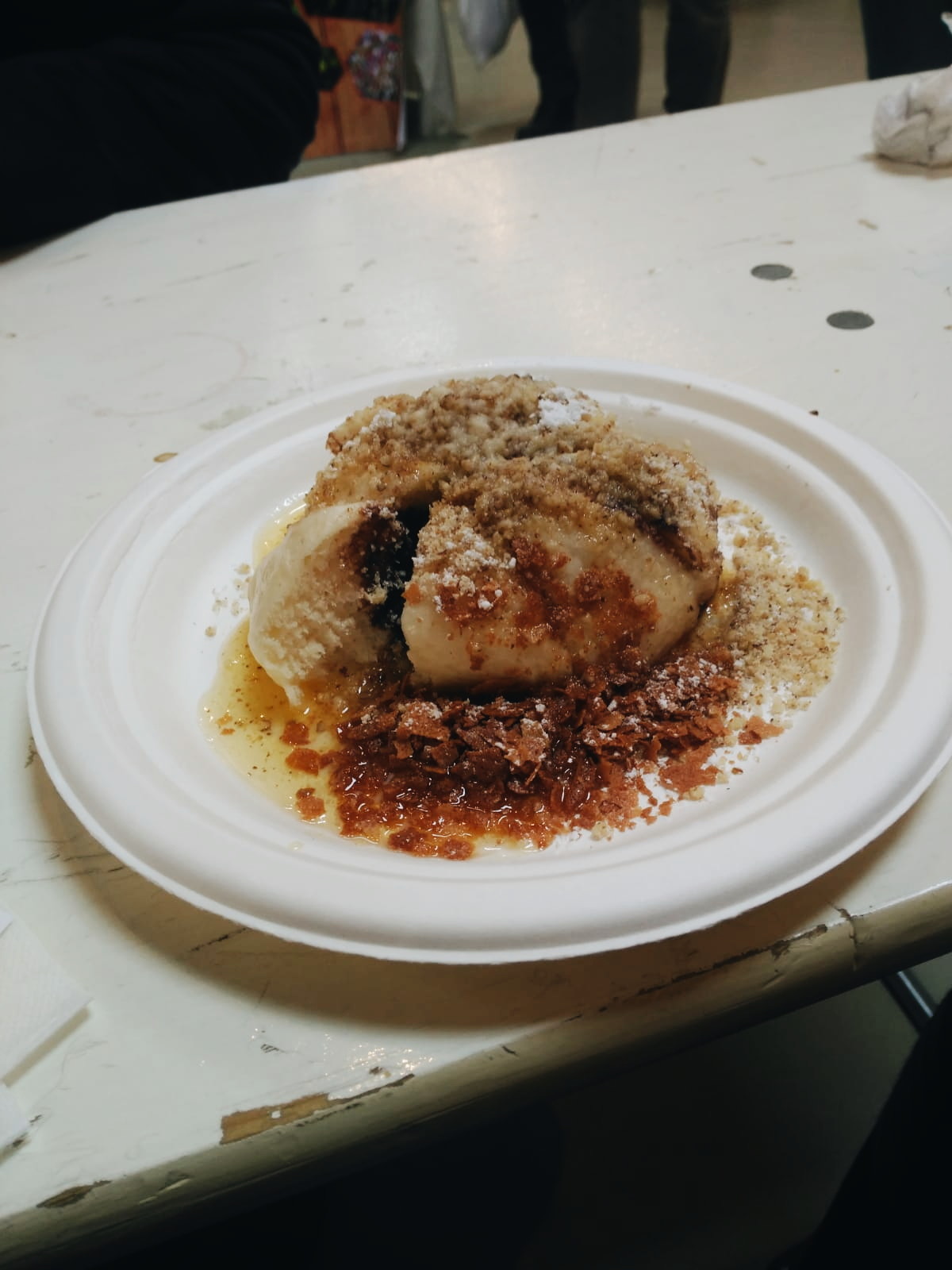A guide to Slovakian gastronomy
A guide to Slovakian gastronomy
Hello everyone! In today's post, I am going to talk to you about Slovakian gastronomy. For those who are going on Erasmus to Bratislava, I imagine that this information will arouse a certain curiosity in you, especially finding out more little by little about the country in which you are going to spend a small (or large, you never know) period of your life. Previously I posted a very interesting blog about the cultural differences between Spain and Slovakia which you can read by clicking here. As I knew that the post about food was going to be long, here it is. I will talk to you about what dishes are typical in Slovakia and why they are strongly related to how the people are there. Let's go!

Introduction
Slovakian gastronomy is an inseparable element of their culture. Each country's food says something about its habitants. It speaks about their resources, their territory and also their personality. Food isn't something banal or arbitrary, it is a much more varied and greater concept which you have to bear in mind when you are getting to know a society.
Most Slovakian dishes always have one of these ingredients in common: potato, pork, flour, bryndza cheese and cabbage. Apart from these products, in Slovakia, they make dishes that, like is logical, are influenced by the countries that border them: Austria, Ukraine, Poland, Czech Republic and Hungary. For this reason, even though I am going to tell you about a series of typical Slovakian dishes, it would not be strange that a person from the places which border with Slovakia may feel that this dish comes from their country. In fact, there are still debates today about the origin of several traditional dishes, for example goulash, a Hungarian dish.

And it is normal. Not long ago, Czechoslovakia was a single country. Now I am going to stop going on and let's get into the nitty gritty.
Bryndzové halušky
It has a hard name, but after repeating it a few times you will be able to say it correctly. Bryndzové halušky is definitely the most famous dish in Slovakia. In absolutely every traditional restaurant in Bratislava you can find it on the menu. A lot of the tourists that visit this country want to try it, although it's not always a success since it has a strong and quite strange flavour.
As for the recipe, the ingredients are the following: potatoes, flour, bacon, butter and bryndza cheese. It is made by cooking a kind of "gnocchi" made from potato and flour, brown them a bit in the pan and then add the bacon and the bryndza cheese (as a summary). The recipe in itself isn't too complicated, but it takes time.
If you ask me, the truth is that the first time that I tried it was in a very touristy restaurant in Bratislava and as for the flavour, I didn't think it was bad. Some time after, I travelled to the Trata Mountains and I was lucky enough to eat in a traditional restaurant in the middle of the mountains. Here, I ordered it again and there was no comparing the two. It is clear when this dish is made with knowledge and personality, compared to when you have it somewhere that only wants to sell things and make money. For this reason, you have to be cautious with where you eat. The best thing is to ask a local so they can give you your own recommendations.

Bryndza cheese, which is really popular here, is a typical sheep cheese of the region. So that you can get an idea, the most similar cheese to this one that I know is quark. As well as in the Bryndzové halušky, Slovakian people use this cheese in many recipes in their day to day lives. It is quite common to add it in toasties, along with spring onion, for example. The truth is that bryndza is quite good, but it can be a bit strong for the stomach, as well as being a calorie bomb.
Parenica
This is another smoked cheese which is very popular in Slovakia. The first few days that I was in Slovakia, we decided to have a dinner where each person bought their own dish (it didn't have to be a traditional one). The Slovakian girl that was in our group brought parenica (Slovakian cheese) and showed us it. It has a spiral shape, which comes off in strips, which makes it quite fun and entertaining to eat. You usually eat it with bread. The truth is that it doesn't have a very unique taste. In my opinion: it was nothing special.
Pirohy
Another dish which always appears on restaurant menus is Pirohy. They are similar to ravioli, but in the shape of a half moon. They are made with similar ingredients to Bryndzové halušky, since the mixture is also made from egg and flour. The best thing about Pirohy is their filling. I always thought that it would be a savoury dish full of different kinds of meat or cheese, for example, but the truth is that once my Slovakian friend ordered it with berry jam. Something very different between Slovakians and the Spanish is that for them, it is completely normal to have something sweet as a main meal. In Spain, it doesn't work like that, since the majority (if not all?) of our dishes at meal times, except for dessert, are savoury. So as you now know, if you have a sweet-tooth, Slovakia is your place to let loose.
Lokše
This dish isn't as typical as the previous ones since to find it you have to look a little harder. In fact, Lokse is more served during the autumn and winter months. It is a kind of "crepe" which is served with goose or duck (more special meats). The mixture of Lokse, as you can imagine, is made out of potato and flour. Once you have stopped associating crepes as something sweet, this dish is really nice. You can try it during the Christmas Markets season.
Fried cheese
So simple. It doesn't require any more explanation. Slovakian people love this dish, especially children, and in fact, it is something that they regularly serve in school canteens. Another calorie bomb and a lot of the time it is also oily.
Soups
Slovakian people love soup. It is a typical dish in Slovakia and this could be due to the climate there. Like in Spain, Italy and Greece the Mediterranean diet is quite fresh, probably due to the warm climate, especially by the Mediterranean sea, in countries like Slovakia hot dishes are very common, since people make then to adapt them to their environment. And it is because in the winter time in these countries, the temperature can reach -30 degrees Celsius in many areas. There is nothing better than a good soup to face up to the cold and keep warm.
In absolutely all the menus of the day in any restaurant, you will find soup or a vegetable blend as the first dish, with the first option being far more popular. They have infinite varieties and combinations of soup, but one of the most famous ones is the kapustnica y Cesnačka one.
Kapustnica
This soup is made with cabbage, onion, different kinds of meat and vegetables. Depending on who cooks it, it may even be spicy. This fermented cabbage soup is usually served with bread. It isn't a light meal. This soup is a traditional dinner during the Christmas period when usually the whole family will meet up to spend some time together.
Cesnačka
This soup is super popular not just in Slovakia, but also in Poland and the Czech Republic. "Cesnak" means "garlic" in Slovakian so as you can imagine, this soup which is served in a bowl bread which they've taken the centre out of (called "bosniak") really tastes of garlic. At the bottom of the bread and on the sides there is cheese. The truth is that this soup is one of my favourites since it has a really good flavour. If you visit one of these countries, you should definitely try it. They say: Warm soup, perfect to soothe a cold in the middle of winter.

Now finishing off with the food section in terms of main meals, I would like to say that despite the previous dishes being the most typical ones, Slovakian gastronomy has a lot more variety. In fact, the dishes that I like the most are the most simple and common ones. For example, meat with rice and any sauce, fish with rice, etc. You can try these dishes in any traditional restaurant, preferably not a touristy one, and you will not be left disappointed. I recommend it 100 per cent.

Desserts
They have a good range of desserts, honestly. A lot of ingredients used in the desserts are the same: jams, dried fruits, honey and also poppy seeds (which are very popular here).


Here are some of the popular ones:
Babovka
You can easily buy this in a supermarket. It is made with eggs and flour and served with coffee. Its flavour isn't very sweet so is you aren't really into sweet things, this could be a good option.
Trdelník
I talked to you about this sweet-treat previously, in my post about Prague. The origin of this dessert is strongly debated everyday. Some people say Czech Republic, others Slovakia. In the end, you forget the whole debate when you taste it because it is honestly really good. This little roll is empty inside and has different filings, although in my opinion, it is better with no filling, just sprinkled with sugar and maybe almonds on the outer part. Delicious!
Bratislavské rožky
I currently work in a Spanish school and a lot of my students often bring this dessert to school to share with everyone. It is a kind of roll which is really tasty, similar to a bagel.
Palacinky
This would be similar to what Spaniards know as crepes, although their literal translation is what Spaniards know as tortitas (American pancakes). The Palancinky is usually served with some kind of filling. They are really good and they are one of the best Slovakian desserts. Try them.
Alcohol
I couldn't miss out a section dedicated to alcohol in this blog since Slovakians are experts on this topic. They have infinite types of alcohol, which are really different to the Spanish ones. In the same way that in the winter people face the cold temperatures with soup, there is also another stronger option which is to have a good drink to warm up.
One of the most famous kinds of alcohol is called "Slivovica", which is an alcohol distilled from plum. If this flavour doesn't work for you, there are other combos: “hruškovica” pear flavour (“hruška” in Slovakian) or Borovička, which tastes of juniper berry, very specific. As you can imagine, these alcohols are super strong because a big part of their make up is pure alcohol, almost medical quality. So think twice before doing a shot.
Another famous drink, although not as traditional, is the Tatratea or Tatranský čaj. I haven't tried it, I have only smelt it... It was no strong that I didn't even want to risk trying it. Its smell is the same as that of any herbal spirit to be honest. And it comes from the Tatra Mountains, the biggest, most famous and most popular mountains in the whole of Slovakia. It has different flavours and different alcohol percentages, for all preferences.
As for non-alcoholic drinks, Kofola stands out, which despite not being traditional is very popular and is always seen on a restaurant table. It is the Czech-Slovakian version of Coca-Cola, but it is a lot better, sweeter with a touch of herbs I would say. Here everyone likes it. In locals, it is very common to see jugs of beer and kofola.
And that is everything I wanted to tell you. Probably the alcohol and dessert section has remained somewhat incomplete, but this is as much as I know after having lived for a year and a half now in the Slovakian capital. Without a doubt, the recipes that the cuisine of this part of Europe can offer is quite broad and very different to that in Spain, something that you have to work with day to day. At the end of the day, trying new dishes is nothing more than learning to have an open mind. Thank you for reading this post, and I'll see you soon for more. Best wishes.
Photo gallery
Content available in other languages
- Español: Una guía de la gastronomía eslovaca
- Italiano: Una guida alla gastronomica slovacca
Want to have your own Erasmus blog?
If you are experiencing living abroad, you're an avid traveller or want to promote the city where you live... create your own blog and share your adventures!
I want to create my Erasmus blog! →










Comments (0 comments)